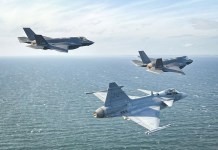The Philippines has long been engaged in a ‘confrontation’ with China over the control of vast swathes of the South China Sea. The country has finally committed to acquiring its first-ever submarine. The decision stems from the increasing Chinese aggression and Gray Zone operations in the region.
The French Naval Group, which has emerged as one of the top contenders, has offered its Scorpene submarines to turn the Philippines Navy into a major force. The South East Asian country also has an offer from South Korean DSME, Russia, and Turkey to build submarines for its navy.
The Philippines is not only looking to acquire a submarine but also manufacturing within the country. Along with the building capability, the country is looking at training capabilities.
“There is a plan. But it’s still being developed. Operating a submarine is not a small commitment. It is a very large commitment because of the training that is involved, the equipment that is involved, and the operational requirements that are involved are quite significant,” President Ferdinand R. Marcos Jr. Marcos said during a media interview at the 125th-anniversary celebration of the Philippines Navy in Manila.
Reports inform that the Philippine Navy has already sent personnel to France for training before procuring the submarines. This suggests that the Naval group might be in the pole position with its Scorpène-class diesel-electric submarines (SSK) on offer. Brazil, Chile, India, and Malaysia have also chosen the submarines.
The Philippine Navy has started working towards building its submarine force since 2015 by sending its personnel to train at the DCI’s facility in France. A crew of 31 sailors will operate the Scorpene SSK that the Naval Group is offering the Philippine Navy and will have an endurance of 80 days at sea.

This variant is similar to those operated by Brazil. It will also have six torpedo tubes and can deploy a total of 18 munitions. It will be armed with SM 39 Exocet anti-ship missiles and F21 heavyweight torpedoes.
Despite the intent to procure, the submarine plan had been in limbo due to the small defense budget of the country. The estimated budget for procuring two submarines has been pegged at 70-100 billion Philippine Pesos (1.25-1.80 billion USD). The procurement is part of the Philippines Navy’s Horizon 3 modernization plan (from 2023-2028).
Once the deal is finalized, it will take at least five years for the first of the submarines to enter the fleet. While the Naval Group is not offering to build the submarines in the island country, it is offering to train its personnel for four years.
The watchers of the South China Sea have welcomed the development and say that the Philippines will be better off by allying with like-minded countries and building internal capability. Presently most of its neighboring countries – Vietnam, Indonesia, and Malaysia are operating submarines.
Professor of International Relations at King’s College London, Harsh V Pant, told the EurAsian Times: “The kind of assertiveness China is showing, the only way for the regional countries is to work together with like-minded countries… followed by building adequate capability, in the context of the Philippines for example, it is the idea of acquiring a submarine fleet.”
Commodore Ajay Jay Singh, a retired submariner from the Indian Navy, said: “They (Filipinos) must counter the Chinese CG and maritime militia. An overtly hostile presence could lead to unintended consequences. A submarine capability will restrict Chinese options if they intend to use force to get their way in the disputed waters. Any augmentation of the SE Asian navies to counter the Chinese threat would be an effective deterrent.”
David vs. Goliath – As The Philippines Prepares To Stand Up To China
In 1994, China occupied Mischief Reef, a low tide elevation in the Spratly Islands, well within the exclusive economic zone of the Philippines, and turned it into a military garrison. It was used as a shelter by the local fishermen.
In 2016 an international tribunal squashed any justification China might have had for harassing ships passing by Mischief Reef, “its controversial artificial islands,” blocking Filipino fishermen from areas like Scarborough Shoal, or interfering with other nations’ attempts to explore for oil off their coasts.

Despite the ruling, China wrestled control of Scarborough Shoal, a coral reef around 140 miles from the Philippine coastline, and has maintained a constant Chinese coastguard presence there. For a long time, the Philippines hoped that its muted response would help in a peaceful resolution of the disputes. But with time, China’s aggression in the region has only increased, and it has started employing Gray Zone Operations, making it difficult to counter Beijing’s strong-arm tactics.
The power disparity between China and the Philippines is huge. China’s GDP per capita is roughly 3.5 times larger than the Philippines’. From 2012 to 2022, the Philippines spent an average of just 1.15 percent of its GDP on defense, compared to China’s estimated 1.70 percent. Regarding maritime power, the capability gap is even more glaring.
China’s navy operates 59 submarines and 92 principal surface combatants; its navy and coast guard operates nearly 700 patrol and coastal combatant ships; and its maritime militia is estimated to have around 400 ships. Compare that to the Philippines’ two frigates and 125 patrol and coastal combatant ships.
Countering Chinese Gray Zone Tactics Together – One For All, All For One
Going back and forth on its aspirations to build a submarine fleet, the archipelagic country has finally consented to go ahead with its navy modernization plans. The step could have come a bit late as the other regional countries in South East Asia, like Indonesia, Malaysia, Vietnam, and Singapore, already operate submarines.
This makes it imperative for the Philippines, which has one of the world’s largest coastlines, to strengthen its navy. Procuring a submarine can be a deterrent, underscoring the Philippines’ ability and determination to protect its territorial sovereignty.
China’s Gray Zone operations entail coercing weaker countries into submission without resorting to military means. Its actions are unclear and deniable, including influencing the economy, meddling with the country’s political affairs, and spreading misinformation.
Deterring aggression in the “Gray Zone” is challenging as the aggressor deliberately shies away from breaching the threshold between uneasy peace and armed conflict. Instead, it slowly and slowly chips away at the status quo and creates something in its place.
Its militia vessels harassing commercial vessels in the region is one such example. Prof. Pant also suggests that the weaker countries would be better off sticking together and sharing their best practices.
“So ultimately, it is the question of the countries working together in convergence groups and about learning from each other. Countries facing similar situations can also learn from how others have responded,” Prof. Pant said.
“In particular, start sharing intelligence and information because a lot of Gray Zone tactics China has been able to use against nations is when they are alone, when they don’t have robust partners, and when they don’t have adequate, reliable information to tackle this challenge,” he added.
The Philippines has also signed a deal to purchase BrahMos supersonic cruise missiles from India, which will be delivered by early next year. The introduction of Brahmos in the Philippines has been described as the “most strategic purchase the AFP has made in years.” Its deployment could allow the Philippines to enact its version of an anti-access/area denial strategy.
The island country is also leveraging its position to form a strategic alliance with foreign powers in the Indo-Pacific. The Philippines modernized its 1951 Mutual Defense Treaty with the US to include their “shared resolve” to defend against armed attacks on their aircraft, public vessels, and armed forces- to include their respective Coast Guards – in the Pacific, including anywhere in the South China Sea.
The US and the Philippines updated the 2014 enhanced Defense Security Cooperation Agreement earlier this year, giving US patrols access to four additional Philippine bases. In a show of strength, both countries conducted their biggest maritime drill in a clear message to China that the Philippines chooses to actively deter China’s attempt to chip away at its sovereignty island by island.
- Ritu Sharma has written on defense and foreign affairs for over a decade. She holds a Master’s Degree in Conflict Studies and Management of Peace from the University of Erfurt, Germany. Her areas of interest include Asia-Pacific, the South China Sea, and Aviation history.
- She can be reached at ritu.sharma (at) mail.com





